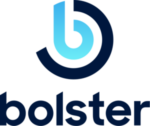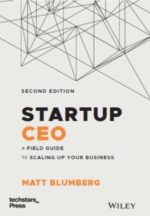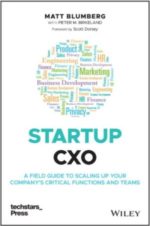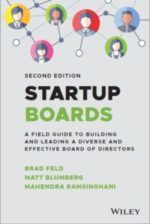It’s Easy to Feel Like a Luddite These Days, Part II
It’s Easy to Feel Like a Luddite These Days, Part II
In Part I, I talked about tagging and podcasting and how I felt pretty lame for someone who considers himself to be somewhat of an early adopter for not understanding them. So now, 10 weeks later, I understand tagging and have a del.icio.us account, although I don’t use it all that often (quite frankly, I don’t have tons of surfing time to discover cool new content). And I’ve even figured out how to integrate del.icio.us with Feedburner and with Typepad.
I’m still out of luck with Podcasting, mainly because my iPod and computer setup at home makes it really difficult to add/sync, so I haven’t given that a shot yet.
But today I had another two breakthroughs — I switched from AOL Instant Messenger to Trillian for my IM client, and I started using Skype. Trillian is pretty cool and of course free. I’ve never used MSN Messenger or Yahoo Messenger seriously, so the value for me is less in the aggregation of all three clients, and more in tabbed chatting. Just like Firefox, the client lets you have all your chat windows displayed as tabs in a single window, which is much simpler and cleaner. But better than Firefox, you can detach a chat window if you want to see it separately.
Skype is really cool. I understand why the company will be sold for a good price, although I still don’t understand either $3 billion as a price or eBay as a buyer. For those of you who don’t know what it is, Skype is voice Instant Messenger on steroids. The basic functionality (for free) is that you can ping someone computer to computer, and have a real time voice chat if you are both online and accept the connection via your computer’s microphone. If you decline the connection, it saves a voicemail for you. The extras, which I haven’t tried yet, include SkypeOut (you can dial a real phone number from your computer for $0.02/minute, anywhere in the world) and SkypeIn (you get a phone number to give people so they can call your computer from a phone). The quality was pretty good — certainly as good as or better than many cell phone connections, if not up to land line or VOIP standards. Permission and usage/volume controls will be an issue here long-term since this is much more intrusive than regular test-based IM, but when it works, it is a beautiful thing.
Now, just like the vendor mayhem in the blog/RSS world (Typepad, Feedburner, Feedblitz, etc.), we need to get Trillian to incorporate Skype into its client so there’s a truly universal chat application.
Why Publishing Will Never Be the Same, Part II
Why Publishing Will Never Be the Same, Part II
In Part I of this series, I talked about our experience at Return Path publishing a book back in January through a new type of print-on-demand, or self-publishing house called iUniverse and why I thought the publishing industry was in for a long, slow decline unless it changes its ways.
We had another interesting experience with iUniverse more recently that reinforces this point. It turns out, although iUniverse is mainly a “self publisher,” they also have a traditional publishing model called their Star Program, which includes an editorial review process. The good news for us is that they contacted us and said they liked our book so much, and sales are strong enough, that they’ve given it an Editors’ Choice and Readers’ Choice notation and they want to put it in the Star Program. That was very exciting! I mean, who doesn’t want to be a star? The bad news is that the traditional model isn’t particularly compelling. This is the deal they’ve offered:
– A 3-year exclusive for them (our current contract is non-exclusive)
– Diminished control over the IP
– Diminished royalties
– iUniverse would re-publish the book, which means (a) it would become unavailable for 6 months before the re-launch, (b) they would give it a new cover and re-edit the book, (c) we could revise the content if we want, and (d) they’d have control over all final decisions around the editorial and cover
– iUniverse would do more active marketing of the book
Ok, so this could be a compelling deal, if the “more active marketing” was really going to move the needle for us. So we asked more about what that gets us. The answer:
– Sending the book out for reviews (we did this within our industry but certainly not by broader business press, although we probably could do so on our own)
– Setting up book signing events (hard to imagine this is interesting for a business how-to book like this)
– Setting up interview or radio appearances (again, we did this in-industry but not broader)
– Introducing us to the buyer from Barnes & Noble retail stores (success rate unknown – too early to tell in the program’s life)
The folks at iUniverse had no idea what we could even project in terms of increased sales from these activities. When we pushed on this a little bit more on the tangible benefits of marketing, their end comment was “the most successful books are the ones where the authors are out actively promoting them.”
We haven’t made a decision on this one yet. Their support is probably valuable on balance, the change in royalty structure isn’t material, and assuming we could carve out the IP issues to our satisfaction, it could be a good way to issue a second edition with less cost. The in-store presence is really the wild card that could really tip the scales.
But the lure of legitimacy (e.g., someone else published it with an editorial review process, we didn’t just pay to play) is the biggest thing in iUniverse’s favor on this one, and that’s what I have to imagine will decrease over time for the publishing industry as it becomes easier and easier for individuals to publish content, market it, and establish credibility by having other individuals rate and review it.
Thanks to my colleague Tami Forman for her assistance on these postings (and for managing the book project!). Tami is too modest to tell anyone, but she is a wonderful writer and has a blog that she updates not nearly often enough on food — she used to be the food editor for iVillage.
Book Shorts: Fred the Cow?
Book Shorts: Fred the Cow?
I enjoyed two interesting, super-quick reads from last week that have a common theme running through them: being remarkable.
The Fred Factor, by Mark Sanborn, is one of those learn-by-storytelling business novellas. It’s all about the author’s mailman, Fred, and how Fred has figured out how to make a difference in people’s lives even with a fairly routine job. The focal points of the book are things like “practice random acts of kindness” and “turn the ordinary into the extraordinary by putting passion into your work.” It’s a good reminder that it is unbelievably easy, not to mention free, to be kind and thoughtful, and that those things are always always always worth doing. Kinda makes me wonder what the Brad factor is. <g>
The Big Moo, a collection of essays written by 33 different business thinkers/writers and edited by Seth Godin, isn’t out yet, but you can pre-order it via that link on Amazon. It follows the main theme of another of Seth’s books, Purple Cow, about how to make your business remarkable and backs it up with various vignettes from the different writers. It has some great reminders about how easy and inexpensive it can be to be remarkable in business. Wisdom like “Criticism? Internalize it,” and “Get great ideas about your business from new employees,” and “How would you run your business if you relied on donations from your customers in order to survive?” are all insightful and thought provoking.
Each is great and an easy read, and while one is more personal and the other business-oriented, in they are both somewhat remarkable.
A Small Rant About Lawyers
A Small Rant About Lawyers
My least favorite thing about lawyers (and I don’t make that statement lightly) is when they spend more of your money arguing why they shouldn’t do something than they’d spend if they just sat down and did the darn thing to begin with. Hmmmph.
Compression
Compression
I had one of those "aha" moments the other day when I saw these powerful charts for the first time. It’s not that I didn’t realize that we humans have been adopting new technologies faster and faster over the last century (that would be a "duh" moment). It’s that I didn’t realize just how much faster the adoption had gotten relative to other technologies.
The first chart here, from a report issued by the Dallas branch of the Federal Reserve, shows the U.S. household penetration of new technologies on the vertical axis and years from date of introduction on the horizontal axis.
And in case that wasn’t a clear enough visual representation, here’s the critical tabular data.
It just makes me wonder — what’s next on the list, and how vertical will its line be? Thanks to Carl Turza for pointing me to this interesting data.
For My Email (Bloglet) Subscribers
For My Email (Bloglet) Subscribers
Many of you rely on emails from an outfit called Bloglet to receive notifications that I’ve posted something to my blog. However, as you no doubt know, Bloglet’s service is incredibly flakey, so many times, the notices don’t go out.
I am trying a new service called Feedblitz, which will serve the same purpose but appears to be MUCH more reliable. For a couple of days, I will use both Bloglet and Feedblitz in parallel to make sure they both work, but then I’ll turn off Bloglet. You don’t have to do anything to convert your subscription over — I will do it for you. Just be aware that the emails will now be coming from a different source.
Thanks, and let me know if you have any questions or comments.
Unfolding the Map
Unfolding the Map
I heard two similar catchphrases last week, both from entrepreneurs I respect, that are diametrically opposed:
1. If you don’t have a map, you can’t get lost
2. If you don’t have a map, you can’t get where you’re going
How to reconcile the two? I think the answer is stage of company. In the early days of a business, being too rigid on what you’re building and how you interact with your customer set can doom you. You have to be nimble! Spry! Not care exactly what your endgame is, as long as it’s good.
As your business grows and you have a customer base to support and numbers to hit, having too much product development wanderlust across the organization will kill you. You have more people at more levels in the organization who need more direction and goal-setting in order to stay effective and productive.
The trick is having enough of a map in the early days to not get completely defocused, and having enough flexibility in the map later on to switch routes if there’s traffic ahead.
links for 2005-08-19
-
Entrepreneur Bernard Moon does a great job of articulating “how to build the perfect team” for your new startup
Book Short: Not As Deep As You’d Like
Book Short: Not As Deep As You’d Like
Deep Change, by Robert Quinn, is a reasonably interesting collection of thoughts on management and leadership, but it doesn’t hang together very well as a single work with a unified theme. The promise is interesting — that we must personally abandon our knowledge, competence, techniques and abilities and “walk naked into the land of uncertainty” to undergo great personal change that can then lead us to organizational change — but the book doesn’t quite deliver on it.
That said, I enjoyed the book as a quick read for a few of its more interesting concepts. For example, Quinn has a great crystallization of many things I’ve observed over the years called “the tyrrany of competence” where organizations can get paralyzed by people who are technically strong at their jobs but who are either disruptive culturally or who have such a chokehold on their role that they hold back the organization as a whole from growing. Another good concept is a chart and some related commentary about how a person transforms from an individual contributor, to a manager, to a leader — great for any growing company. The last interesting one was a grid mapping out four different types of CEOs — Motivator, Vision Setter, Anazlyer, and Taskmaster. Quinn goes into some detail about the characteristics of each and then circles back to the inevitable conclusion (like most Harvard Business Review articles) that the best CEOs exhibit all four characteristics at different times, in different circumstances.
So not my favorite book overall, but some good tidbits. Probably worth a quick read if you’re a student of management and leadership. Thanks to my former colleague Kendall Rawls for this book.
Why Publishing Will Never Be the Same, Part I
Why Publishing Will Never Be the Same, Part I
As you may know, we published a book earlier this year at Return Path called Sign Me Up! Sales are going quite well, in case you’re wondering, and we also launched the book’s official web site, where you can subscribe to our “email best practices” newsletter.
The process of publishing the book was fascinating and convinced me that publishing will never be the same. Even in two parts, this will be a long post, so apologies in advance. Front to back, the process went something like this:
– We wrote the content and selected and prepared the graphics
– We hired iUniverse to publish the book for a rough total cost of $1,500
– iUniverse provided copy editing, layout, and cover design services
– Within 8 weeks, iUniverse put the book on Amazon.com and BN.com for us (in addition to their site) and properly indexed it for search, and poof — we were in business
– Any time someone places an order on any of those three sites, iUniverse prints a copy on demand, binds it, and ships it off. No fuss, no muss, no inventory, but a slightly higher unit cost than you’d get from a traditional publisher who mass prints. We receive approximately 20% of the revenue from the book sale, and iUniverse receives 80%. I’m not sure what cut they give Amazon, but it’s hard to imagine it’s more than 10-20% of the gross
Other than the writing part (not to be minimized), how easy is that? So of course, that made me think about the poor, poor publishing industry. It seems to me that, like many other industries, technology is revolutionizing publishing. Here’s how:
– Publishers handle printing and inventory. iUniverse and its competitors can do it for you in a significantly more economic way. Print on Demand will soon be de rigeur.
– Publishers handle marketing and distribution. iUniverse gets you on Amazon.com and BN.com for free. Amazon.com and BN.com now represent something like 12% of all book sales (cobbled together stats from iMedia Connection saying the annual online book sale run rate is now about $3 billion and the Association of American Publishers saying that the total size of the industry is $24 billion). Google and Overture take credit cards and about 5 minutes to drive people to buy your book online. Buzz and viral and email marketing techniques are easy and cheap.
– Publishers pay you. Ok, this is compelling, but they only pay you (especially advances) if you’re really, really good, or a recognized author or expert. iUniverse pays as well, just in a pay-for-performance model. Bonus points for setting yourself up as an affiliate on Amazon and BN to make even more money on the sale. iUniverse actually pays a higher royalty (20% vs. 7.5-15% in the traditional model), so you’re probably always a fixed amount “behind” in the self-publish model, but you don’t have an agent to pay.
Unless you are dying to be accepted into literary or academic circles that require Someone & Sons to annoint you…why bother with a traditional publisher? As long as you have the up-front money and the belief that you’ll sell enough books to cover your expenses and then some, do it yourself.
In Part II, I will talk about how iUniverse pitches a “traditional publishing model” and why it only reinforces the point that the traditional model doesn’t make a lot of sense any more in many cases.
Email and Business Development: Two Great Tastes…
Email and Business Development: Two Great Tastes…
Interestingly, Chris Baggott offers compelling evidence for the opposite view he intended in his recent posting claiming email is not an acquisition tool. I respect Chris as a thought leader in the email marketing services industry and am a fan of what he and his colleagues have done in building Exact Target, but I think he’s dead wrong on this one.
Email is a phenomenal customer retention tool, no question about it. I totally agree with the claim that website owners should never let a prospect escape from their website without signing up for an email program. It’s very true that spending money on website traffic can go to waste if a browser never buys or returns — or worse, if you pay the same search keyword fee time and time again to reach the same browser.
However, his own post starts to lay out the reasons why email is, in fact, also really good for acquisition marketing: because we all still love it, we spend a lot of time reading and responding to it, and we value the information it brings to us. In short , it’s got all the strongest attributes of a great acquisition medium: reach, frequency and, most importantly, trust. Isn’t that what advertisers look for when they are trying to figure out whether to spend their acquisition dollars in print, radio, TV, outdoor, or direct response vehicles?
In fact, more consumers and B2B professionals spend more time in their inboxes than they do consuming any other form of media — digital or not. So, if you want to reach your target, you need to be using acquisition email. And definitely never let a prospect come to your web site without giving you his or her email address for future contact!
Just because email is so extraordinary a retention and customer relationship tool, doesn’t exclude the reality that it also works really well to reach new prospects. Smart marketers use email for both.





